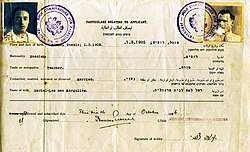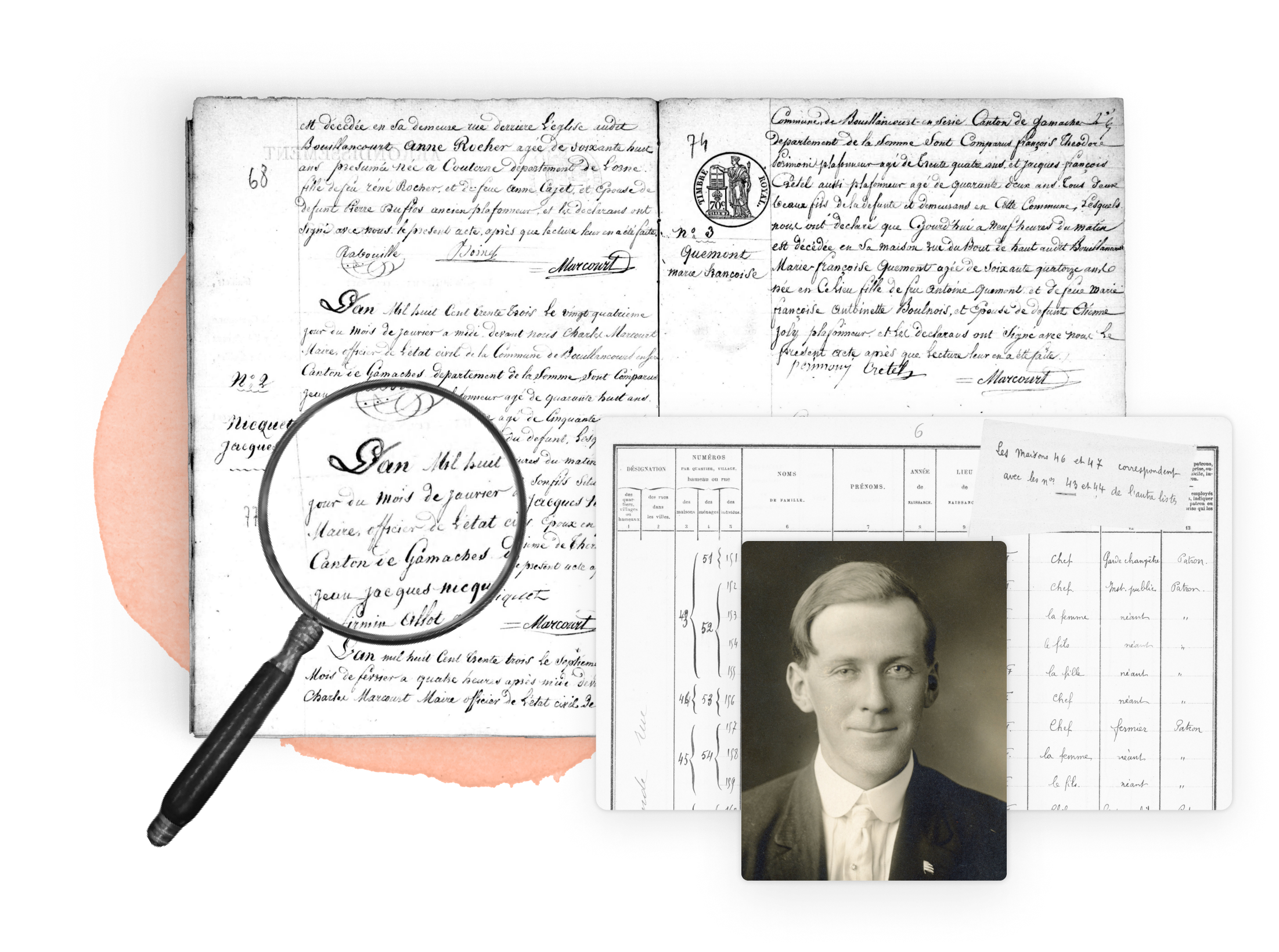See also: How to search for marriage records in Israel

The official documentation of marriage records in Israel can be traced back to 1876, when the Constitution of 1876 was promulgated, which granted religious autonomy for the administration and regulation of life-cycle events. Contrary to popular belief, the millet system in the Ottoman Empire did not exist officially until then, but each community kept separate records -each synagogue, church, and mosque kept a record of the marriages conducted, albeit not in a standardized or organized manner. After a series of reforms were promulgated in 1839 during the Tanzimat era, which ended in the promulgation of the Constitution in order to westernize the Sublime Porte's institutions.[1] Since then, each religious community relied then on its own religious authorities to document marriages, births, divorces and deaths. One of these examples the [partial] list of marriages performed between 1893 and 1913, originally belonging to the Archive of the Council of the Sephardi and Oriental Communities of Jerusalem are available in the Jerusalem Municipal Archives; this collection contains 2,856 records of brides and grooms, the names of their parents and the date of their marriage.
In 1921, the High Commissioner of the British Mandate of Palestine, Herbert Samuel, established the Chief Rabbinate of Israel. Since then, Jewish marriages in Israel have been officially performed by this entity, and all marriage records have been kept by them. As a continuation of the policy established during the Ottoman Empire and maintained during the British Mandate,[2] marriages in Israel can be performed only with the backing of the religious community to which couples belong, and inter-faith marriages performed within the country are not legally recognized; however, marriages performed abroad, including interfaith, and same-sex marriages, are recognized by the government and must be registered just as are marriages performed locally.
Copies of marriage certificates from various parts of Mandatory Palestine that were submitted to the British administration between 1921 and 1948 were issued by the Chief Rabbinate of Israel upon request. These records contain personal details of both the bride and the groom such as their first and last names, their age, calling, community, residence, names of their parents, the calling and residence of their parents (if alive) as well as the name and calling of the two customary witnesses. The copies of these records had been held until now by the Israel State Archives (ISA) until the Israel Genealogy Research Association (IGRA) was requested to index and transcribe them, in order to build a database of 102,599 certificates from the Mandatory Palestine period, which is now available to the public. Although this collection does not include the totality of the marriage records that took place in Israel during those years, it contains a large majority of the marriages performed during this period, making it a remarkable gem and central piece of Israeli genealogy. The marriage certificates in this collection are in both English and Hebrew, for the simple reason that they were issued during the time of the British Mandate of Palestine, which was between 1921 and 1948.
Research your ancestors on MyHeritage
Information available on Israeli marriage records
Israeli marriage certificates contain many personal details about the bride and groom, such as their first and last names, their age, calling, community, residence, their parents' names, the calling and residence of their parents (if alive), as well as the name and calling of the two customary witnesses.

Israeli marriage certificates are divided into three parts:
- The top section: contains the date and place of the wedding,
- The middle section: contains ten different personal details about the bride and groom,
- The bottom section: contains the date and place of issue.
In this particular marriage certificate of Yosef Gluzman, the top section contains the following information:
The document is titled “CERTIFICATE OF MARRIAGE,” with the number of the certificate on the top right, 102065 in this case. Then, the location is indicated per town and district, in the example above, Herzliyya and Lod, respectively. The date is mentioned according to both calendars, the Gregorian on the left side and the Hebrew on the right side. From the document is can be understood that the marriage was conducted as part of an official ceremony on May 27th, 1948, which corresponded to the 18th day of the month of Iyar in the Hebrew calendar. Many certificates also include the Hebrew year; however, since the year is already printed as 19__, on both the right and left side, in many cases they wrote the same Gregorian year on both sides, as is the case in this example. Others simply wrote the Hebrew year in letters in that space after 19__.
The middle section of the certificate is the largest and most important section. This middle section contains 10 columns of personal details about the bride and groom, with their information listed on the bottom and top rows, respectively.
Example of information items available on a marriage certificate
| Data item | Groom | Bride |
|---|---|---|
| Name | Yosef Gluzman (Yosef Menachem Mendel HaKohen) | Ester Liman |
| Age | 24 | 19 |
| Calling | Carpenter | n/a |
| Community | Ashkenazi | Ashkenazi |
| Residence | Herzliyya | Herzliyya |
| Names of parents | Moshe Pinchas HaKohen and Chava Gluzman | Menachem Mendel and Rivkah Liman |
| Calling of parents | Carpenter (father) | Merchant (father) |
| Residence of parents | Herzliyya | Herzliyya |
| Name of witness | Shimon Hertzberg | Moshe Nirenberg |
| Calling of witness | Carpenter | Carpenter |
Additional details about the bride and groom
Name and surname
The names of the groom and bride will also include their Hebrew names if different than the common name used, or the one that appears in their IDs. If the husband comes from a family of Kohanim (priests, in which case the name will include “HaKohen,” meaning “the Kohen”) or from a family of Levites (in which case he may be called “HaLevi”) this will be referenced here. Similarly, if the groom or bride changed or Hebraized their surnames, the old or new surname appears in brackets.
Age
The law that prohibited marriage for individuals under the age of 18 was only passed in 1950, after the establishment of the State of Israel. Therefore, it is possible to find brides and grooms who are younger than 18 among marriage certificates that were issued before then.
Calling
In many cases, women did not have an occupation and this box is left empty or crossed out.
Community
The community refers to their ethnic group, such as Ashkenazi or Sephardic. Often, the bride and groom simply described themselves as being from “Israel” or “Jewish.”
Residence
This refers to the town or city of residence, not the actual home address.
Name and surname of father and mother
Some certificates only mention the first names of the parents, while others will include the surname of the father. If the groom is called “HaKohen” or “HaLevi,” or the bride is the daughter of a Kohen or Levite, the father's name will have this title added.
Calling of father and mother
If the parents are deceased, this box is left blank or crossed out.
Residence of father and mother
If both parents or one of them is deceased, it will be specified here. If the parents live outside of Israel, this box will indicate the country where they reside, and sometimes even the city/town.
Name and surname of witnesses
Jewish weddings customarily require two witnesses to be present and to participate in the wedding ceremony. Therefore, the name and surname of the witness appear in the ninth row of the record. Sometimes, the names of both witnesses is written inside the cell of the husband’s record.
Calling of witnesses
Their calling, if they have one, will appear in front of where the names of the witnesses are written, whether in two cells or in one.
The bottom section of the marriage certificates mainly contains the date and place where the certificate is issued. This part will mostly have the same date and place that appears on the top part of the document, with the addition of the signature of the rabbi at the right bottom. Many rabbis will also add their signature seal to this part of the certificate.
See also
Explore more about marriage records in Israel
- Israeli records on MyHeritage
- Marriage records on MyHeritage
References
- ↑ Cleveland, William L & Bunton, Martin (2009). A History of the Modern Middle East (4th ed.). Westview Press. p. 82.
- ↑ Radday, Frances. A Free People in Our Land: Gender Equality in a Jewish State. Ministry of Foreign Affairs. 01.04.2005.


